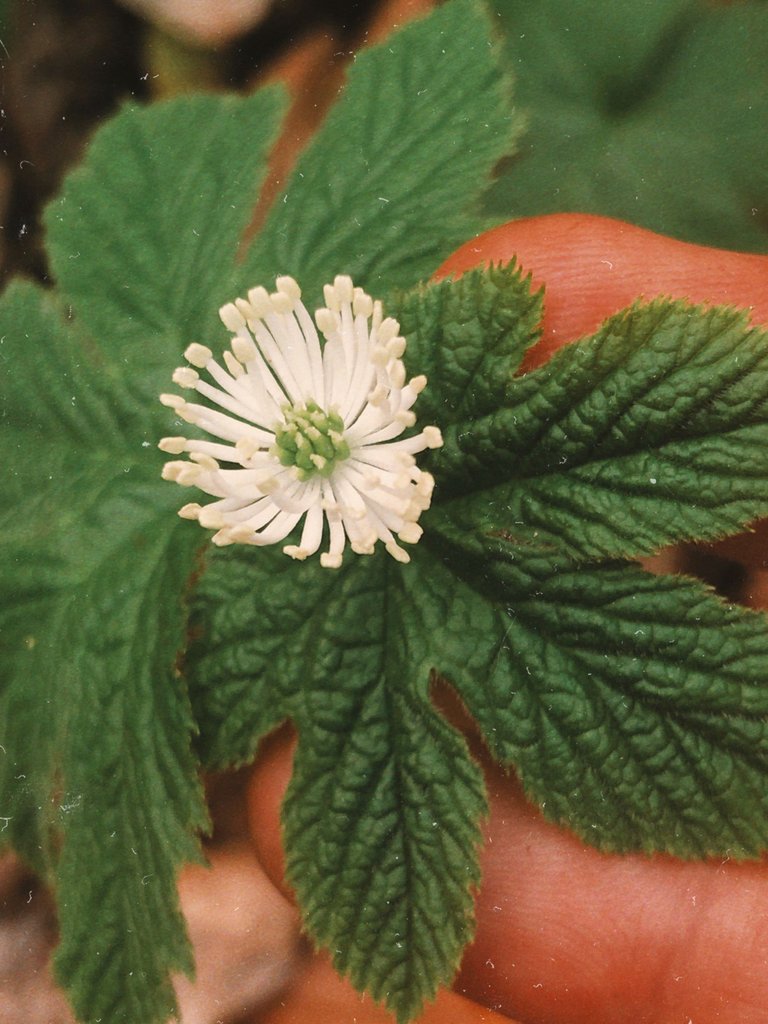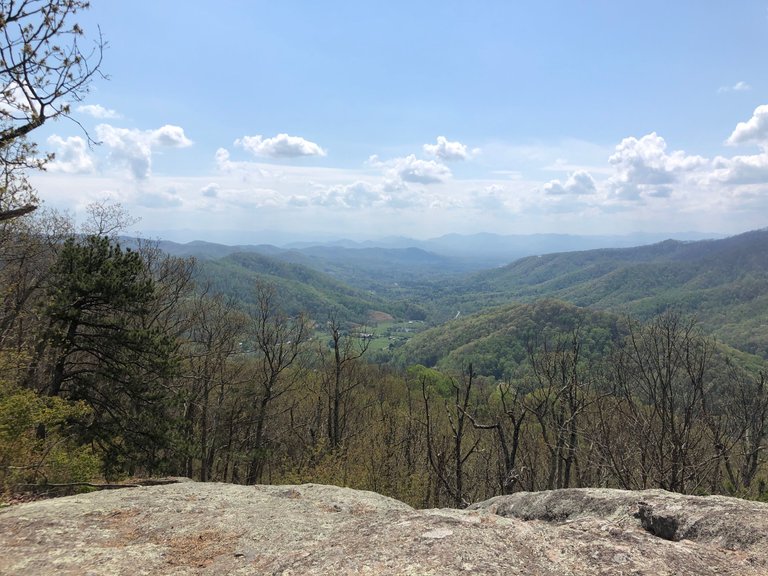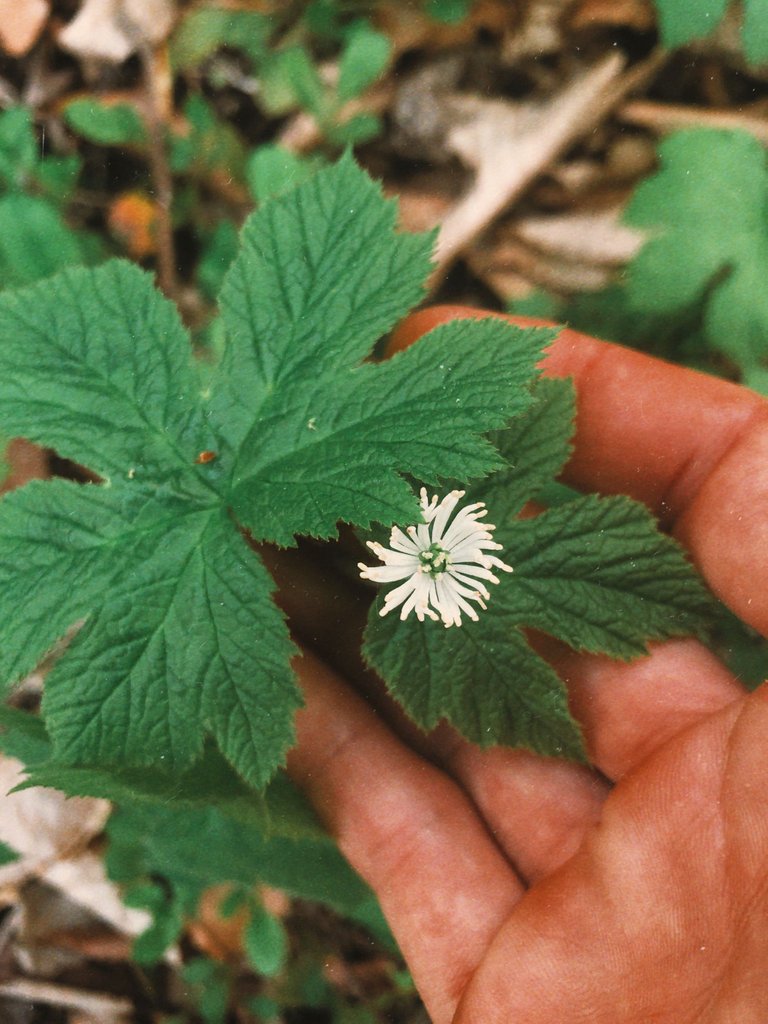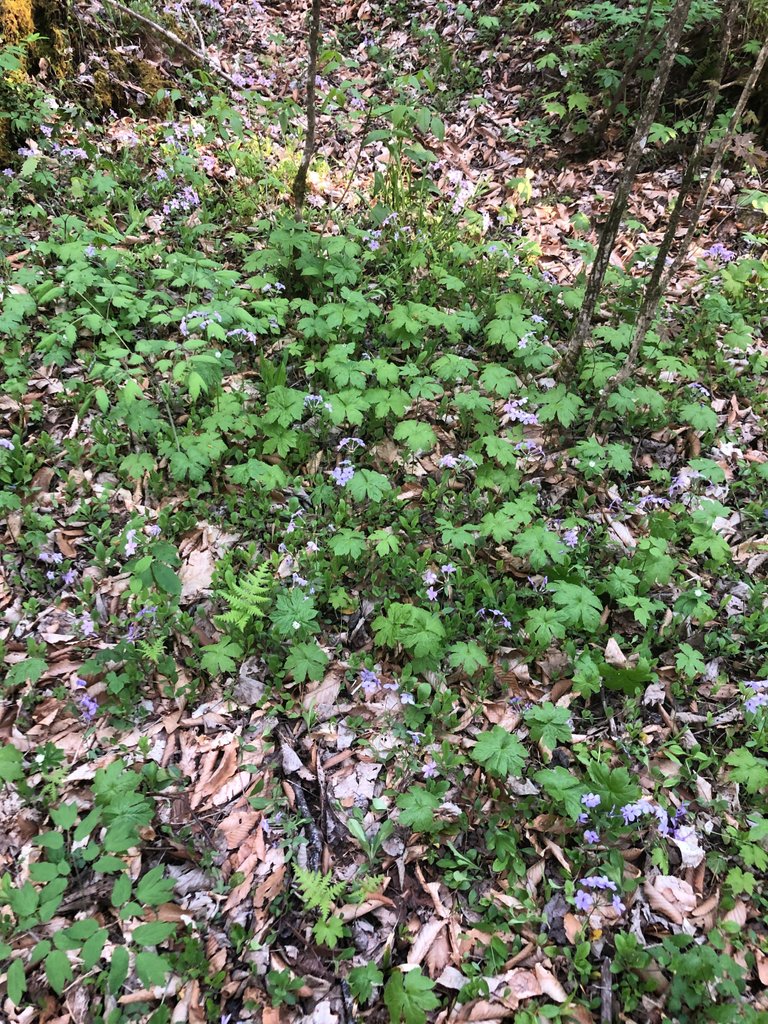Right now, I'm back on the farm I used to live on and grow tons of food and herbs on in western North Carolina.
The land is tucked into the Appalachian mountains, and is just down the road from the public national forest, with trails, free camping and old growth forest. When I lived here years ago, I was a budding herbalist, and the land here is where I began to unfold exponentially as a 'plant person.' Before this, I lived in New Hampshire studying with herbalists, and in southeast Ohio at the Goldenseal Sanctuary, where I interned with folks who wild-tended forest medicinals that are at-risk because of global commerce. I met a lot of these forest medicinals in Ohio, and when coming to North Carolina to study with Juliet Blankespoor of the Chestnut School of Herbal Medicine, I got to deepen my relationships.
I've been walking the same trails lately that I used to walk, and it's been a lot of things. It's been eerie, like being in the past, seeing a past self of mine. At the same time, I feel like I've gone backwards in a way, and I feel a little bit out of place here, where my friends and peers have all had children and bought land and grown their homesteads and I"ve just been...on the road... planting different kinds of seeds.
The trails host old plant friends I used to visit often.
The other day, I was walking on the old trails in the evening, and on one I used to rarely go on, because it is quick to access and not as exciting seeming as the other trails. As I meandered in this beautiful area of wild Phlox, blooming Bellworts, leafing Spicebush and Sassafras, I saw something out of the corner of my eye.
I tend to be able to spot rare plants. I have found Ginseng in a sea of green from 20 feet away. I've found False Unicorn root while going on runs, out on remote back roads of the mountains.
Earlier in the day, I was visiting with a friend, the ethnobotanist Marc Williams. He was giving us a tour of the Herb Mountain Sanctuary land where he has his research office. This land had many rare plants flowering, including Goldenseal. After seeing over 200 plants that day, and then going out on the trail after we were done, I had the imprints of certain plants in my minds eye, refreshed and tuned in. It's really true that one can be tuned in, hyper in resonance in some instances.
What I was seeing out of the corner of my eye was a certain shade of green a certain leaf shape, the instant recognition of the tiny white flowers. I just knew.
There are only 10-15 patches of Goldenseal 'in the wild' in western North Carolina as far as anyone knows. It's more abundant stands are further into Appalachia, I've seen it abundantly in Tennessee, Ohio, Kentucky. Overall though, because of commerce and how long it takes for Goldenseal to grow and how much needs to be dug in order to get the roots needed to make medicine, It is considered 'at-risk' by the United Plant Savers.
The United Plant Savers focuses mainly on rare plants of North America (and Hawai'i) that are considered at-risk due to popularity in medicine and culture and there are factors for determining whether a plant fits the category. Habitat loss is also a big factor. Many of these plants are easy to grow at home on land with the right conditions, including Goldenseal. Goldenseal can be planted via rootlets or seeds. Plants like Ginseng which is over-harvest mainly for sale in China, can be grown from seed and sometimes roots. Interestingly enough though, sometimes there is not as much of an incentive to cultivate these wild medicinals because the 'wildness' factor makes it worth more. In the case of Ginseng, the roots are worth more in China, where American Ginseng is sought after more than the regional one that grows there. And roots that are more gnarled and old are worth a lot and the straight carrot-like roots that are produced from farming are worth less. And perhaps they are indeed less medicinal.
This patch was probably about 200 plants, or at least leaves, some of them are connected underground and come from the same roots. The leaves contain the sought after medicine that folks love Goldenseal for- berberine, just as much as the root, which is what people mostly dig for commerce. Digging kills the plant, though theoretically if some root is left, new plants can still grow. I think its okay to still sell this plant but I really think that tending stands in the wild or on private land is super necessary for sustainable harvest. Even some craft mentors in Idaho, in the U.S., are growing the plant, far away from its native habitat in Appalachia.
I hope it's cool to hear a little bit about Goldenseal, see what it looks like where it is found wild. I hope to go back and gather some seed from the stand to replant and spread out.




Oh wow - I have never seen goldenseal in the wild. Damn I admire the biodiversity there!
My husband's a good spotter of things - he just has the eye. But then, the more you tune in, the more you see - when I was walking alot in England I was spotting all kinds of things that he wasn't.
Yeah! and I bet it's done flowering now. The forest is so quick here. And the green is getting bigger and bigger as the days get longer and the temps warming.
Love that you found this stand and got such good photos to share.
pretty special! I want to visit them again as the season goes on.
I've never seen the flowers of Golden Seal before. I didn't realize it was an endangered plant either and the care it needs. Great to see your photographs now.
I would say it is at-risk, not endangered per-se. it can be grown in shade houses or in one’s own forest.